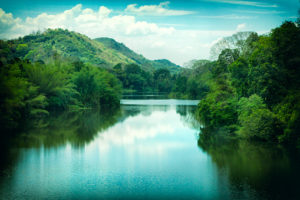Published on: December 4, 2021
PERIYAR RIVER
PERIYAR RIVER
NEWS
An increase in discharge of sewage from cities and towns has resulted in the deterioration of water quality in the Periyar, according to the Kerala State Pollution Control Board.
DETAILS

- Worsening water quality has been detected along the three river stretches
- Results are showing that the worsening of water quality is due to sewage intrusion particularly from cities and towns
- Certain drains carry severely polluted wastewater from identified discharge points from town areas and unidentified sources in industrial areas, especially the Eloor-Edayar stretch
- Coliform content, indicating faecal contamination, was higher than the permissible limits owing to sewage intrusion into the river. But the levels of biological oxygen demand and the coliform count were within the limits along the main stream of the river
- Small and medium industries located along the identified stretches may be resorting to unauthorised discharged into the river
- Found not having effluent treatment plants as prescribed by the board
IMPORTANCE OF PERIYAR RIVER
- Longest river and the river with the largest discharge potential in the Indian state of Kerala
- One of the few perennial rivers in the region and provides drinking water for several major towns
- Utmost significance to the economy of Kerala
- Generates a significant proportion of Kerala’s electrical power via the Idukki Dam and flows along a region of industrial and commercial activity
- Provides water for irrigation and domestic use throughout its course besides supporting a rich fishery
- Named the “Lifeline of Kerala”
- Kochi city, in the vicinity of the river mouth draws its water supply from Aluva, an upstream site sufficiently free of seawater intrusion.
- Twenty five percent of Kerala’s industries are along the banks of river Periyar
Facts
- Originates from Sivagiri Hills of Western Ghats
- Flows through Periyar National Park
- Reaches the Periyar Lake
- Empties into Vembanad Lake and finally into Arabian Sea.
- Major Tributaries: Muthirapuzha, Mullayar, Cheruthoni, Perinjankutti and Edamala rivers.

